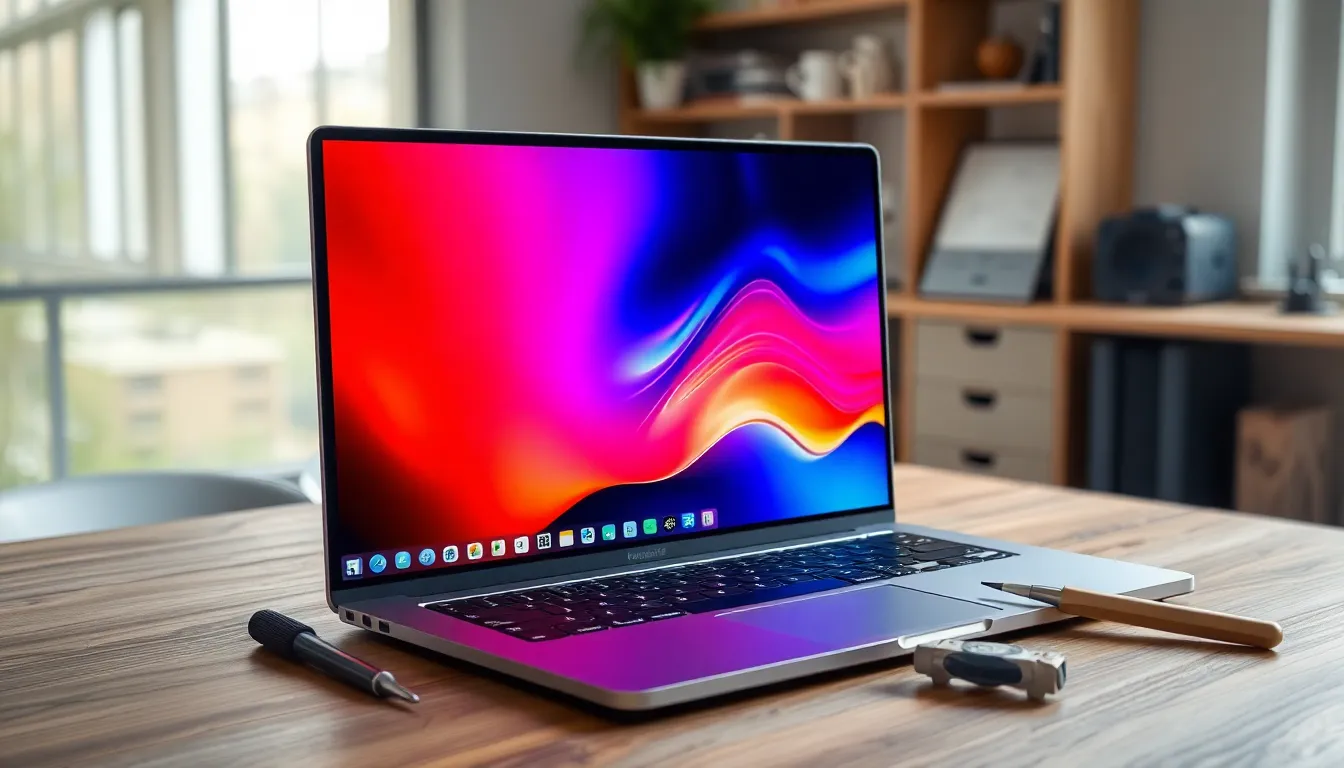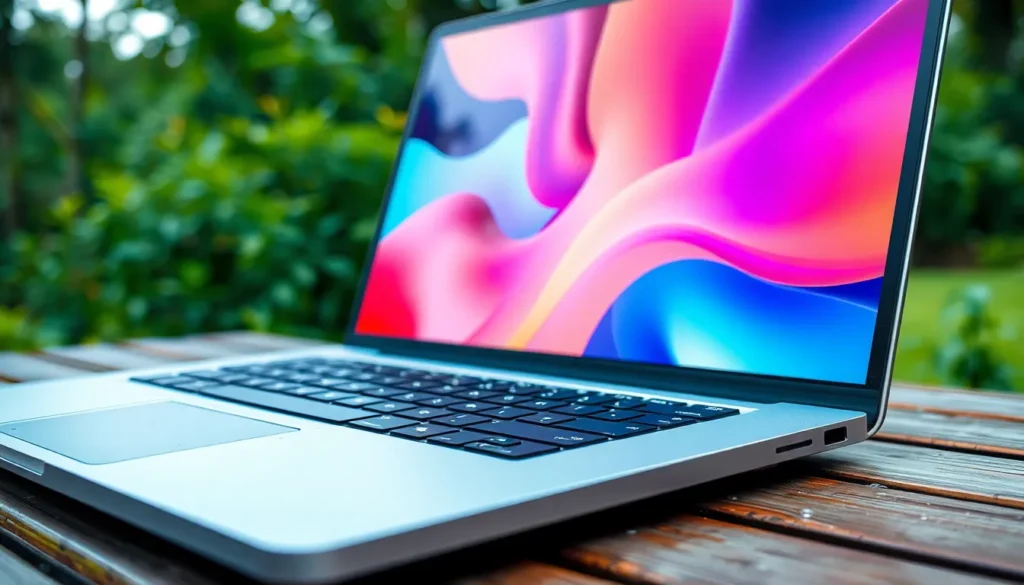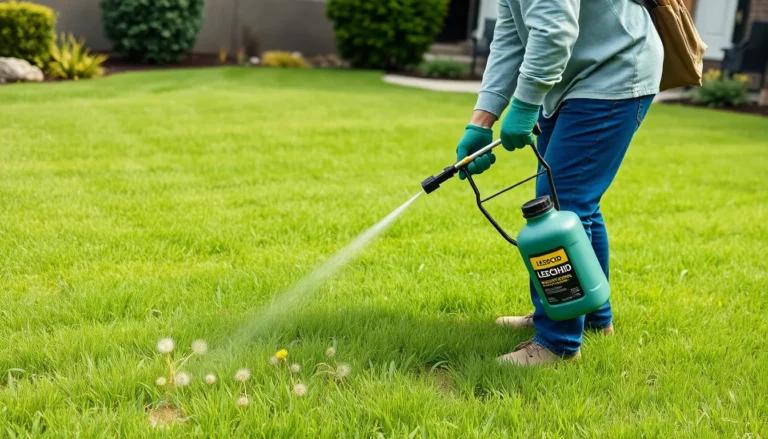Table of Contents
ToggleIn today’s fast-paced digital world, a laptop’s screen is one of its most vulnerable components. Whether it’s a sudden drop or an accidental spill, the durability of laptop screens can make or break the user experience. Understanding the factors that contribute to screen durability is essential for anyone looking to invest in a new device or protect their current one.
Manufacturers are constantly innovating to enhance screen resilience, using materials like Gorilla Glass and advanced coatings. However, not all screens are created equal. Knowing what to look for in terms of material and construction can help users choose a laptop that withstands the rigors of everyday life. Exploring these aspects not only aids in making an informed purchase but also ensures that the laptop remains a reliable tool for work and play.
Overview Of Laptop Screen Durability
Laptop screen durability encompasses the strength and resilience of the materials used in display construction. Factors influencing screen durability include the type of glass, frame material, and overall design.
Manufacturers often use materials like Gorilla Glass, which offers scratch resistance and impact protection. Many devices now employ reinforced plastics and aluminum frames, enhancing overall screen stability.
Screen size, thickness, and the hinge mechanism also affect durability. Larger screens can be more vulnerable to flexing or cracking. Thinner screens may increase portability but often compromise strength.
Common tests for durability include drop tests and scratch resistance evaluations. These tests measure how well screens withstand accidental impacts and everyday wear. Understanding these factors enables consumers to choose laptops that suit their lifestyle and usage patterns.
Improved engineering techniques continuously push the boundaries of screen durability. Emerging technologies, such as flexible displays, promise added resilience for the future.
Factors Influencing Screen Durability


Several critical factors impact laptop screen durability, including material quality and screen type. Understanding these elements assists users in selecting robust laptops that withstand daily use and environmental stressors.
Material Quality
Material quality significantly affects the durability of laptop screens. High-quality materials, such as Gorilla Glass, provide superior resistance to scratches and impacts. Various glass compositions incorporate chemical treatments that enhance strength and durability, allowing screens to withstand accidental drops. Additionally, the frame material influences overall stability; aluminum frames often deliver better protection than plastic ones. Reinforced plastics can also enhance durability without adding excessive weight. Overall, choosing a laptop with high-quality material ensures enhanced protection against wear and tear.
Screen Type
Screen type plays a crucial role in determining durability characteristics. IPS (In-Plane Switching) and OLED (Organic Light Emitting Diode) screens offer different advantages regarding durability. IPS screens tend to have better resilience against pixel burn-in, while OLED screens provide vibrant colors but may be more susceptible to damage if not properly protected. Touchscreen models often incorporate additional layer coatings that can mitigate risks from scratches but may add complexity to repair processes. Users should evaluate screen type based on intended usage and environmental factors to ensure optimal longevity.
Common Causes Of Screen Damage
Laptop screens face several potential threats, impacting their longevity and performance. Understanding these common causes helps users protect their devices effectively.
Physical Impact
Accidental drops represent a leading cause of screen damage. A fall from a height as small as three feet can crack or shatter the display. Pressure applied to the screen during transport can result in pressure marks or spider web cracks. Closing the laptop with objects on the keyboard may also create pressure points, leading to screen failure. Users should handle laptops carefully and invest in protective cases to reduce impact-related damage.
Environmental Factors
Exposure to extreme temperatures can compromise screen integrity. High temperatures may weaken adhesive bonds, causing screens to separate from the body. Conversely, freezing temperatures can lead to screen brittleness, increasing the risk of cracks. Additionally, moisture from spills or humidity can penetrate the device, resulting in short circuits or permanent screen damage. Keeping laptops away from extreme conditions and handling liquids cautiously minimizes these risks.
Testing Methods For Screen Durability
Testing methods for laptop screen durability assess a device’s ability to withstand damage from everyday hazards. Two significant tests include drop tests and scratch resistance evaluations.
Drop Tests
Drop tests simulate accidental falls to measure screen resilience. Manufacturers utilize controlled environments to drop laptops from specific heights onto various surfaces. Measurements focus on impact resistance and recovery after the fall. For instance, a standard drop test may involve heights of 1 meter, essential for evaluating real-world conditions. The results inform users about potential damage under typical usage scenarios, indicating how well a laptop can endure unexpected mishaps.
Scratch Resistance Tests
Scratch resistance tests evaluate how well a screen can withstand abrasions from everyday objects. Manufacturers often employ tools like the Mohs scale, which ranks materials based on their hardness. Testing involves using various objects to scratch the screen surface, assessing the extent of damage. For example, scratches made by keys or coins provide insights into vulnerability levels. Results help consumers understand protective qualities and determine if a laptop screen can endure daily wear and tear while maintaining clarity and usability.
Tips To Enhance Laptop Screen Durability
Enhancing laptop screen durability involves practical strategies to prevent damage and prolong lifespan. Implementing protective measures and adopting careful handling techniques can significantly improve overall durability.
Protective Cases
Protective cases serve as the first line of defense against physical damage. Durable cases, designed for specific laptop models, provide shock absorption during accidental drops. Users should select cases made from high-quality materials, such as polycarbonate or reinforced rubber, which offer better resistance against impacts. Additionally, consider cases with raised edges to protect the screen from direct contact with surfaces when closed. Investing in a screen protector adds another layer of defense against scratches and dust, preserving screen clarity.
Care Tips
Careful handling significantly impacts screen longevity. Users should always close laptops gently, avoiding pressure from items on the keyboard. When transporting laptops, keep them in padded backpacks or sleeves to minimize movement and shocks. Avoid exposing laptops to extreme temperatures and humidity, as these conditions can weaken screen adhesives and materials. Regular cleaning with microfiber cloths ensures the screen remains free of dust and grime, reducing the risk of scratches. Additionally, users should refrain from placing heavy items on their laptops, as this can lead to pressure damage over time.





